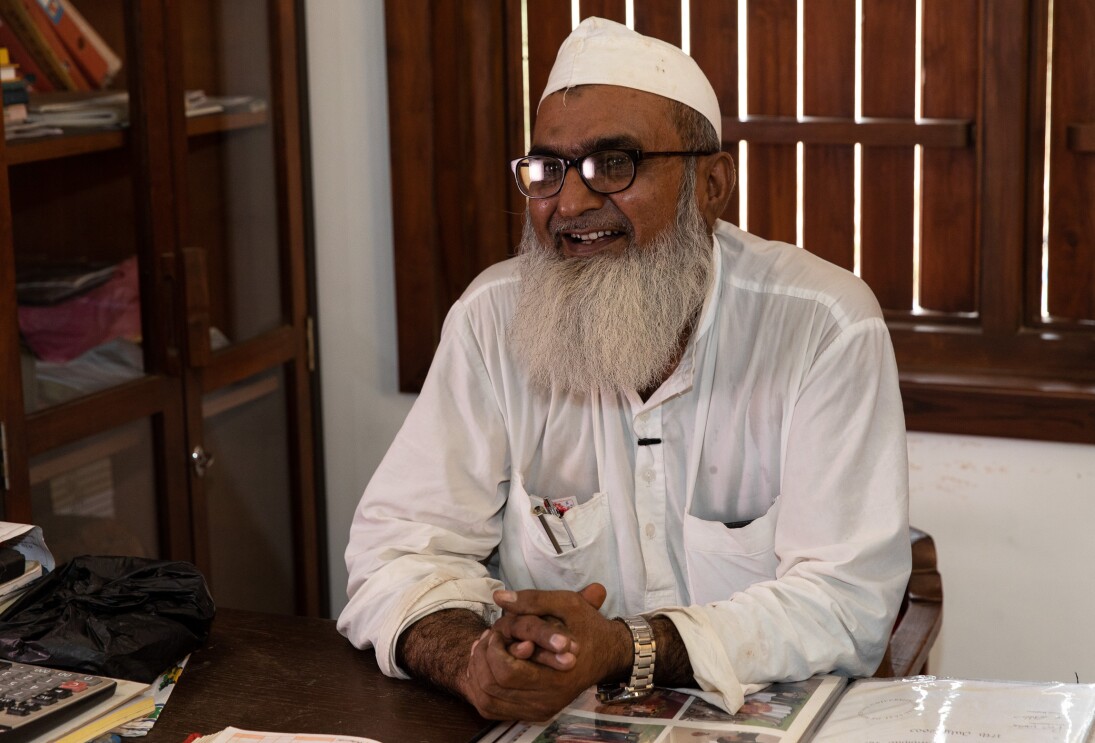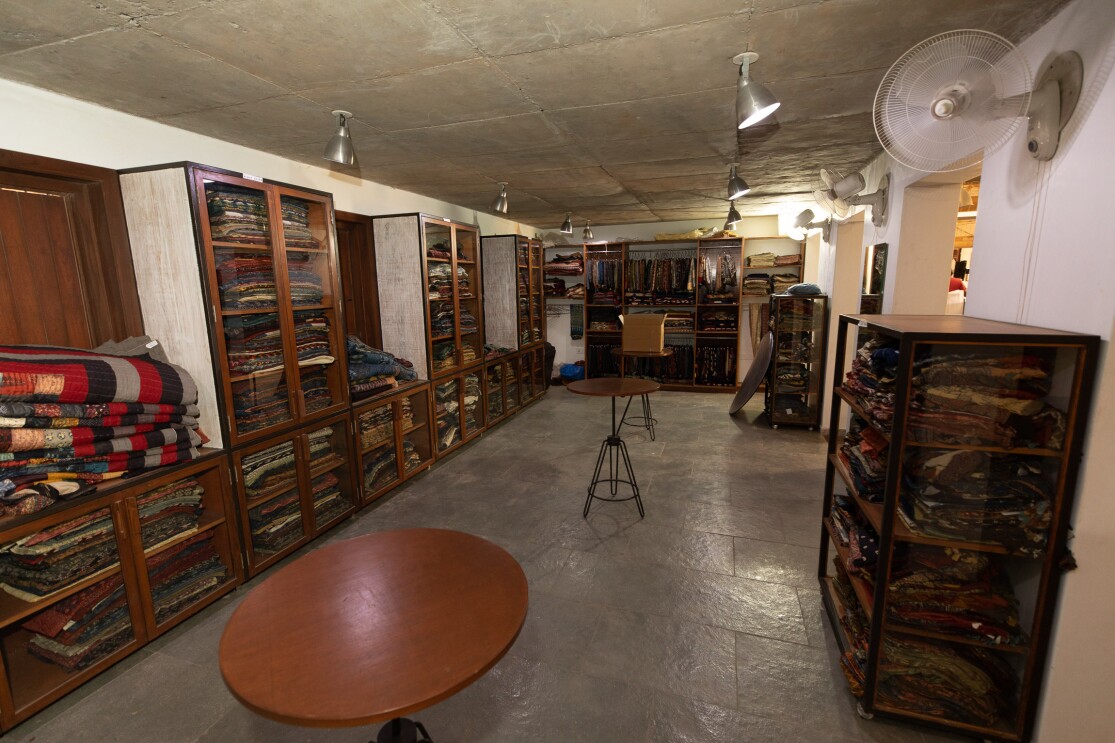On entering the hub of Ajrakh art, what greeted us seemed a tad bit chaotic. A vast tract of land dotted by small rooms in no particular order, a washing tank, lots of bricks that kept wet fabrics in place, basic tools and equipment and of course, workers, who walked about the premises with an easy and almost enviable nonchalance.

Soon, master artisan and son of Ismail Khatri, Sufiayn Khatri met us and began the 'art tour.’ As we walked around, the method in this seeming chaos unraveled itself. As Sufiyan Khatri explained the nuances of block printing, it became clear that each part of the art process was like a piece of a huge puzzle. On their own, the pieces made no sense, but when put together, they told a story of not just an art form, but also of a stoic resilience to keep Ajrakh alive. While workers and artisans walked from one place to another greeting one another sometimes with a nod or with a shout even, the camaraderie between them was hard to miss.
Discover the other art forms from Kutch - Rogan and Mudwork
Sufiyan explained, “If the people who work for me, don’t enjoy themselves at work, they will not be able to work creatively. Ajrakh is a visual art form that involves a rather laborious technique. Apart from having a creative mind, you have to experience the art to enjoy learning it and then creating it. That’s how I learned.” As various processes came alive and he gave instructions along the way, Sufiyan wore huge gloves, dipped a fabric in a tank with indigo dye and showed us the dyeing process. He said, “Creating Ajrakh is a 16-step process, which has to be done over 16 days, so patience is the key. In fact, loosely translated, Ajrakh also means 'do' the process today and 'keep' it - (Aaj meaning 'today' and rakh meaning 'keep'). But the word has its origins in Persian language, where Ajrakh means 'blue.'"
As we walked indoors, into the room where the printing takes place, Sufiyan showed us the various herbs and plant parts from which he makes the dyes and added with a smile, “This is all sourced from nature, so we are into what people call “organic fashion! It is the trend these days, right?” As we nodded, Sufiyan took us to the place where the fabrics were washed, dyed and dried. He said, “This is the key to the Ajrakh art – washing and dyeing – so we need good water and lots of sun. And this village gives us that. And my employees are all people from this village only. They learn as they watch and like I said before, this is an art. I cannot force anyone. So, when I started, it was me and a small team of people (lesser than 10) and today we have over 100 people employed in various parts of the process. It’s important that they get involved and so though the process has been slow, it’s been enriching, because I have this team of people who are emotionally invested in the art. This is what will make the Ajrakh art survive in the long run.”

What Sufiyan said is reflected in the manner in which each worker painstakingly did his part and quietly so. Whether it was boiling the fabric, or drying it or doing the work of block printing, there was a vibe of quiet resilience in the air that was hard to ignore. And that probably stems from the fact that this art had almost got lost – after a massive earthquake that struck Bhuj in 2001. “We, the few survivors, were contemplating whether to to leave the art or leave the village. Then I wondered, why either/or, we can do both. We left our village, moved here and restarted our art – we christened our village Ajrakhpur, after the art form we practise. It was tough to do this, but then we love our art and we are blessed to have been gifted with this knowledge, so we just knew we had to do this. ” This tale Sufiyan Khatri’s father - Ismail Khatri - narrated with pride, even as he walked about the Ajrakh Studio checking some products, before settling into his chair to take stock of the business.

As sarees, stoles and dupattas were folded, kept on hangers or being packed for delivery, Sufiyan said, “Going online has helped us our business get not just orders, but also get visibility. And if our art has to survive we need to do this. From an art that was limited to one part of India to taking it pan India by going online, we were determined to keep Ajrakh alive and we are doing whatever it takes to do so. Handcrafted textiles are the product of a labour of love and emotional investment. It is good to see that this investment has stared giving us returns.”
As boxes were bring readied for shipment and the mobile was being checked for new orders, you realise it's not just history and handicraft that blend seamlessly here, it's history, handicraft and technology that blend in beautifully here.











